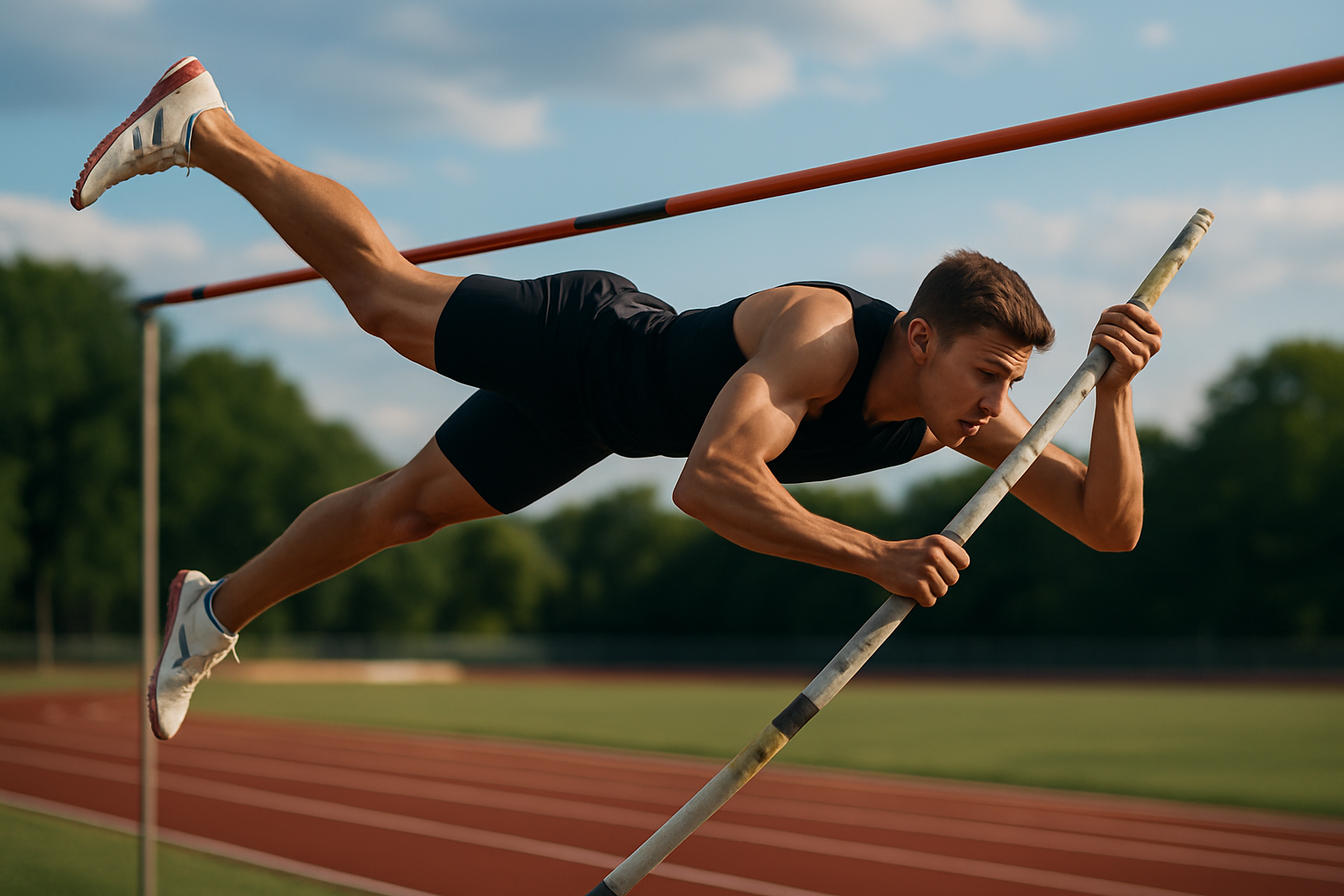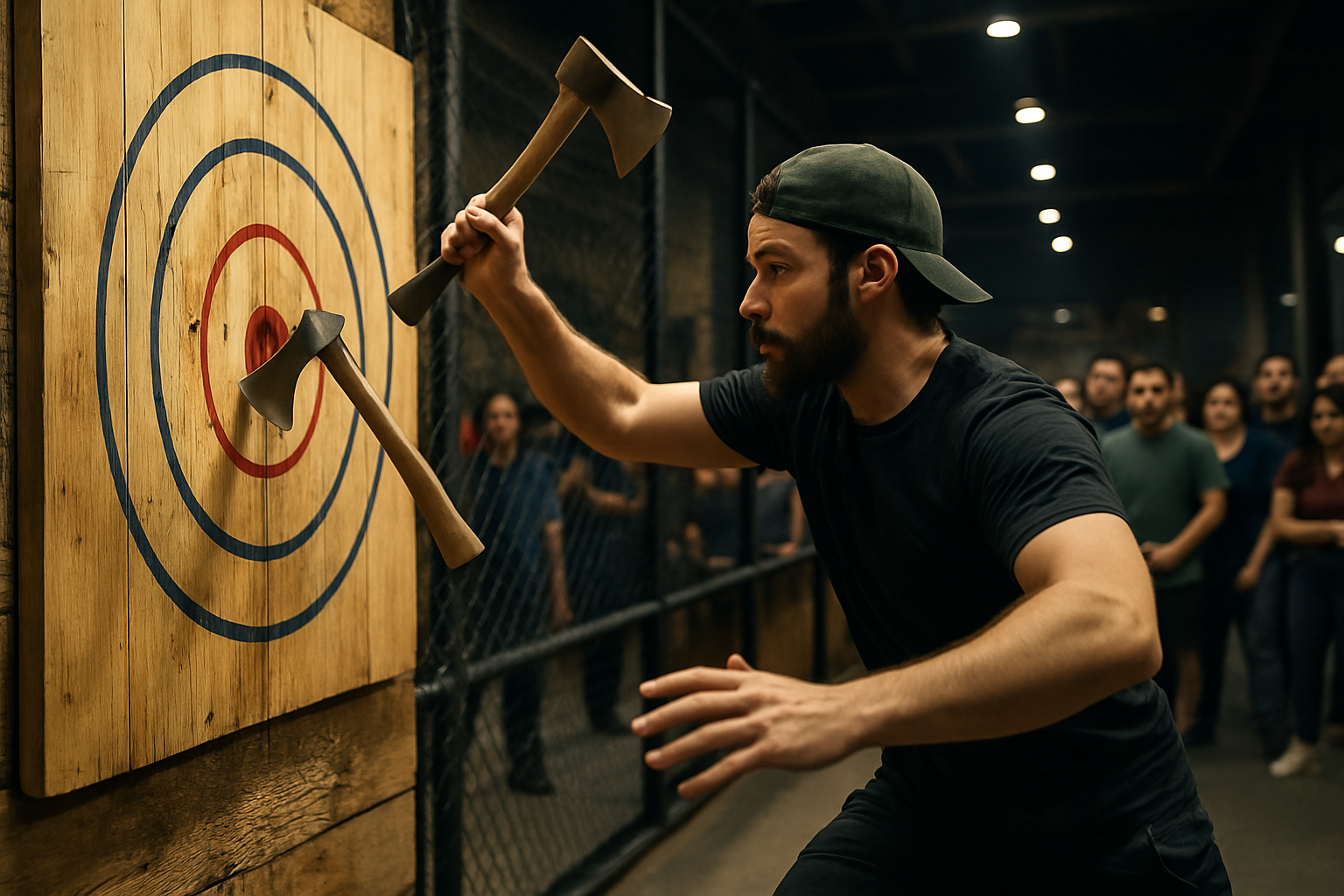Biomechanics of the Perfect Pole Vault
The graceful arc of a pole vaulter soaring over the bar is a testament to human athleticism and physics in perfect harmony. This captivating discipline, blending strength, speed, and technique, has long fascinated spectators and scientists alike. But what exactly happens in those crucial seconds as an athlete transforms horizontal momentum into vertical flight? Let's delve into the intricate biomechanics that make the perfect pole vault possible.

Elite vaulters reach speeds of up to 10 meters per second during their approach. This velocity is crucial, as it directly correlates to the amount of energy that can be transferred into the pole. The run-up also serves to position the vaulter’s body optimally for the plant phase.
Biomechanically, vaulters must maintain a forward lean throughout the approach, with their center of mass slightly ahead of their feet. This posture allows for maximum acceleration and a smooth transition into the plant phase. The arms play a vital role too, with the dominant arm extended forward, holding the pole parallel to the ground.
The Plant: Converting Horizontal to Vertical
As the vaulter reaches the end of the runway, they enter the plant phase - a critical moment where horizontal momentum begins its transformation into vertical lift. This phase requires impeccable timing and technique to execute successfully.
The plant begins as the vaulter drops the pole into the box, a metal-lined pit at the base of the crossbar. Simultaneously, they drive their takeoff foot into the ground, creating a powerful upward and forward thrust. This action initiates the bending of the pole, which will store the kinetic energy generated during the run-up.
During the plant, the vaulter’s body undergoes rapid changes in position. The arms extend overhead, the takeoff leg drives upward, and the free leg swings forward and up. This coordinated movement helps to transfer the athlete’s momentum into the bending pole while maintaining balance and control.
Biomechanically, the plant phase is characterized by high ground reaction forces, often exceeding five times the vaulter’s body weight. These forces, combined with the precise angle of the pole plant, are crucial in initiating the pole’s bend and setting up the subsequent phases of the vault.
The Swing: Maximizing Potential Energy
Following the plant, the vaulter enters the swing phase. Here, the athlete’s body acts like a pendulum, swinging up and around the bending pole. This motion is critical for converting the kinetic energy from the run-up into potential energy stored in the pole.
As the vaulter swings upward, their body forms a “C” shape, with the hips pike and the legs extended. This position helps to maximize the transfer of energy into the pole while minimizing the moment of inertia around the vaulter’s grip on the pole.
The swing phase is where the elastic properties of the pole come into play. Modern poles, typically made from fiberglass or carbon fiber, can bend up to 90 degrees, storing enormous amounts of energy. The vaulter must time their actions precisely to harness this energy effectively.
Biomechanically, the swing phase involves complex rotational mechanics. The vaulter’s body rotates around multiple axes simultaneously, requiring exceptional spatial awareness and body control. The muscles of the core, shoulders, and arms work in concert to maintain grip strength and body position throughout the swing.
The Extension: Unleashing Stored Energy
As the pole reaches its maximum bend, the extension phase begins. This is where the potential energy stored in the pole is converted back into kinetic energy, propelling the vaulter upward.
The extension phase starts with the pole beginning to straighten. As it does so, the vaulter must time their body movements to harness this upward force effectively. They begin by extending their body, pushing away from the pole with their bottom hand while simultaneously pulling with their top hand.
This action, known as the “rock-back,” rotates the vaulter’s body into an inverted position. From here, they continue to extend upward, using the pole’s recoil to gain maximum height. The timing of this extension is crucial - too early, and the vaulter won’t achieve maximum height; too late, and they risk colliding with the bar.
Biomechanically, the extension phase involves rapid changes in the vaulter’s moment of inertia. As they extend their body, their moment of inertia increases, slowing their rotation. This allows them to reach a higher vertical position before beginning their turn over the bar.
The Turn and Clearance: Defying Gravity
The final phase of the pole vault is the turn and clearance. Here, the vaulter must transition from vertical ascent to horizontal clearance of the bar. This phase requires precise timing and body awareness to maximize height and minimize the risk of dislodging the bar.
As the vaulter reaches their peak height, they initiate a turning motion. This turn is typically executed by dropping the leg opposite their takeoff leg, creating a rotational momentum. Simultaneously, they push off the pole with their top hand, fully releasing their grip.
The turn continues as the vaulter’s body rotates parallel to the ground. They arch their back, lifting their hips above their shoulders and head. This position, known as the “layout,” allows the vaulter to clear the bar with their entire body.
Biomechanically, the turn and clearance phase involves complex three-dimensional rotations. The vaulter must control their angular momentum to achieve the optimal body position for bar clearance. This requires exceptional proprioception and muscle control, particularly in the core and lower back.
The Landing: Safely Returning to Earth
While often overlooked, the landing phase is crucial for both safety and competition rules. Vaulters must land on their back in the landing pit, which is typically filled with foam blocks or other soft materials.
The landing technique involves keeping the body straight and arms close to the sides. As the vaulter descends, they prepare to absorb the impact by slightly bending their knees and hips. Upon contact with the pit, they allow their body to sink into the padding, distributing the force of impact over a larger area.
Biomechanically, the landing phase involves significant eccentric muscle contractions, particularly in the legs and core. These contractions help to decelerate the body and prevent injury. The soft landing surface also plays a crucial role in reducing the peak forces experienced by the vaulter.
Training for Biomechanical Efficiency
Understanding the biomechanics of pole vaulting is only the first step. To achieve peak performance, vaulters must train their bodies to execute these complex movements with precision and power.
Strength training forms the foundation of a pole vaulter’s physical preparation. Exercises focusing on explosive power, such as Olympic lifts and plyometrics, help develop the force production necessary for a powerful takeoff and swing. Core strength is also crucial, with exercises like hanging leg raises and medicine ball throws helping to develop the control needed during the swing and turn phases.
Flexibility training is equally important. Vaulters need exceptional range of motion in their shoulders, hips, and spine to achieve optimal positions throughout the vault. Dynamic stretching routines and yoga-inspired practices are often incorporated into training regimens.
Technical training involves countless repetitions of each phase of the vault. Coaches often use video analysis to break down an athlete’s technique, identifying areas for improvement. Drills focusing on specific elements, such as the plant or the turn, help vaulters refine their biomechanical efficiency.
The Role of Equipment in Biomechanics
While the athlete’s body mechanics are central to pole vaulting success, equipment also plays a crucial role in the biomechanics of the sport. The pole, in particular, is a key factor in determining the vault’s outcome.
Modern poles are typically made from fiberglass or carbon fiber, materials chosen for their ability to store and release energy efficiently. The stiffness of the pole is carefully selected based on the vaulter’s weight, speed, and technique. A pole that’s too stiff won’t bend enough to store adequate energy, while one that’s too flexible may bend too much, making it difficult for the vaulter to time their actions correctly.
The length of the pole also affects the vault’s biomechanics. Longer poles allow for potentially higher vaults but require greater strength and skill to control. Vaulters often progress to longer poles as they develop their technique and increase their approach speed.
The runway surface, planting box, and landing pit all influence the biomechanics of pole vaulting as well. A smooth, fast runway allows vaulters to generate more speed, while a well-designed planting box ensures efficient energy transfer into the pole. The landing pit must provide adequate cushioning to safely absorb the vaulter’s momentum at the end of the jump.
Biomechanical Analysis in Competition
In elite-level competitions, biomechanical analysis plays a crucial role in performance evaluation and improvement. High-speed cameras capture every nuance of a vaulter’s technique, allowing coaches and scientists to analyze movements in minute detail.
Key parameters measured include approach speed, takeoff angle, pole bend angle, and body positions at various points throughout the vault. These measurements can be compared to ideal models or an athlete’s previous performances to identify areas for improvement.
Force plates embedded in the runway and planting box provide data on ground reaction forces and energy transfer. This information helps in understanding how efficiently a vaulter is converting their horizontal momentum into vertical lift.
Some advanced systems even use motion capture technology, similar to that used in CGI filmmaking, to create 3D models of a vaulter’s movements. These models allow for detailed analysis of joint angles, velocities, and accelerations throughout the vault.
Injury Prevention Through Biomechanics
Understanding the biomechanics of pole vaulting is not just about improving performance - it’s also crucial for injury prevention. The high forces and complex movements involved in vaulting can put significant stress on an athlete’s body.
Common injuries in pole vaulting include shoulder strains from the plant and swing phases, back injuries from the extension and turn phases, and ankle or knee injuries from improper landings. By analyzing the biomechanics of these movements, researchers and coaches can develop strategies to reduce injury risk.
For example, understanding the forces involved in the plant phase has led to improvements in pole design and planting technique, reducing the risk of shoulder injuries. Analysis of landing biomechanics has informed the development of safer landing pit designs and improved landing techniques.
Training programs are also designed with biomechanical principles in mind to prevent overuse injuries. This includes balanced strength training to address muscle imbalances and technique drills to reinforce safe and efficient movement patterns.
The Future of Pole Vault Biomechanics
As technology continues to advance, so too does our understanding of pole vault biomechanics. Emerging technologies like wearable sensors promise to provide even more detailed data on an athlete’s movements and physiological responses during vaulting.
Virtual reality systems are being explored as a tool for technique training, allowing vaulters to practice their movements in a safe, controlled environment. These systems can provide immediate feedback on body positioning and timing, potentially accelerating the learning process.
Advances in materials science may lead to the development of new pole materials with even better energy storage and release properties. This could potentially allow for higher vaults, pushing the boundaries of human performance even further.
Genetic research is also beginning to play a role in understanding individual biomechanical differences. Studies into genetic factors that influence muscle fiber type, tendon elasticity, and other relevant traits could help in tailoring training programs to an athlete’s specific biomechanical profile.
The Art and Science of Pole Vaulting
While biomechanics provides a scientific framework for understanding pole vaulting, it’s important to remember that the sport is as much an art as it is a science. The perfect pole vault is a beautiful synthesis of physics, physiology, and human spirit.
Each vaulter brings their own unique physical attributes and mental approach to the event. While biomechanical principles remain constant, the way they are applied can vary greatly between athletes. Some vaulters rely more on raw power, while others excel through technical precision or exceptional body awareness.
The psychological aspect of pole vaulting cannot be overlooked. The courage required to sprint full speed towards a stationary object, plant a flexible pole, and launch oneself meters into the air is considerable. Mental preparation and focus are as crucial to success as physical preparation.
Conclusion: The Endless Pursuit of Perfection
The biomechanics of the perfect pole vault represent a fascinating interplay of physics, physiology, and athletic skill. From the initial run-up to the final clearance of the bar, every phase of the vault involves complex movements and precise timing.
Understanding these biomechanical principles allows athletes and coaches to refine techniques, improve training methods, and push the boundaries of human performance. It also aids in injury prevention, ensuring that vaulters can pursue their passion safely and sustainably.
As our knowledge of biomechanics continues to grow, so too does our appreciation for the incredible athleticism displayed in pole vaulting. Each vault is a testament to human ingenuity and physical capability, a moment where science and sport come together in perfect harmony.
The pursuit of the perfect pole vault is an endless journey. As records continue to fall and techniques evolve, the sport remains a captivating display of human potential. Whether you’re a competitive vaulter, a coach, or simply a fan of athletics, understanding the biomechanics behind this extraordinary event deepens one’s appreciation for the grace, power, and precision exhibited in every successful vault.





